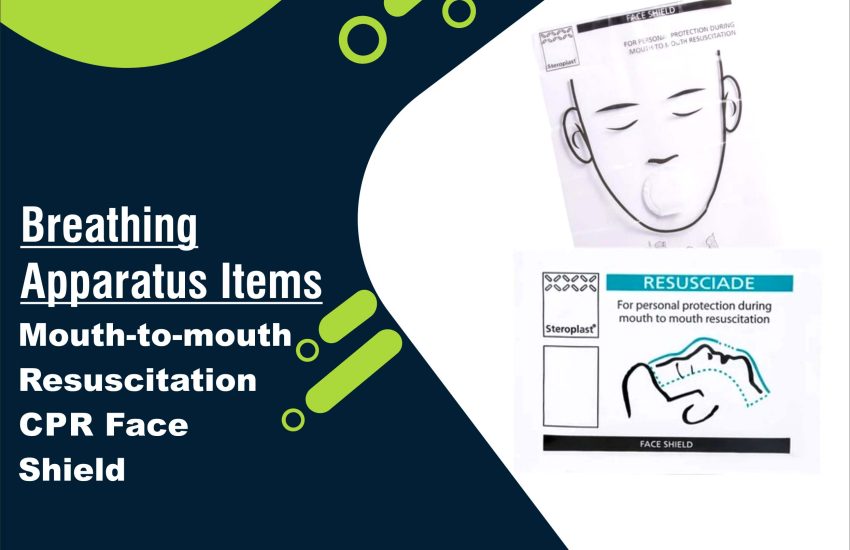Mouth-to-mouth Resuscitation CPR Face Shield When performing CPR (Cardiopulmonary Resuscitation), protecting both the victim and the rescuer is vital. One of the most important tools in this process is the mouth-to-mouth resuscitation CPR face shield. This device helps prevent disease transmission during CPR, ensuring both parties stay safe. In this article, we will discuss the importance, features, and benefits of using a CPR face shield during emergencies.
What is a Mouth-to-Mouth Resuscitation CPR Face Shield?
A mouth-to-mouth resuscitation CPR face shield is a small, portable device used when performing artificial ventilation. It acts as a barrier between the rescuer’s mouth and the victim’s mouth, allowing effective breathing without direct contact. The shield is usually made from clear plastic and includes a one-way valve to prevent air backflow, ensuring safety during resuscitation.
The Importance of Mouth-to-Mouth Resuscitation in CPR
Mouth-to-mouth resuscitation is essential when the victim’s breathing has stopped. This step provides oxygen to the victim’s lungs until normal breathing resumes. Without proper protection, both the rescuer and victim could be at risk of infectious diseases, such as COVID-19 or other respiratory infections.
Why Use a CPR Face Shield?
- Increased Safety and Protection
The CPR face shield provides a protective layer. It prevents direct contact with saliva, vomit, or blood, reducing the risk of infection for both the rescuer and the victim. This is especially important in high-risk environments like public places. - Effective Barrier
Most CPR face shields include a one-way valve, which prevents air and bodily fluids from flowing back to the rescuer. This feature ensures both safety and effectiveness during the process. - Compact and Portable
CPR face shields are lightweight and compact. They easily fit into a first aid kit, purse, or backpack. This makes it convenient to have them on hand in case of an emergency. - Easy to Use
These shields are designed for easy deployment, even for people with minimal medical training. This allows the rescuer to perform CPR without delay.
Key Features of a CPR Face Shield
- One-Way Valve: Prevents the backflow of air and bodily fluids, keeping the rescuer safe.
- Clear, Transparent Design: Offers visibility during the resuscitation process.
- Compact and Portable: Can be easily carried in various bags or first aid kits.
- Single-Use or Reusable Options: Some face shields are designed for single-use, while others can be cleaned and reused.
How to Use a CPR Face Shield
- Place the Face Shield: Position the CPR face shield over the victim’s mouth and nose.
- Perform Chest Compressions: Begin CPR with chest compressions if the victim has no pulse.
- Deliver Rescue Breaths: Use the face shield to provide rescue breaths. Ensure it stays in place.
- Continue CPR: Keep performing chest compressions and rescue breaths until emergency help arrives or the victim shows signs of life.
Benefits of Using a Mouth-to-Mouth Resuscitation CPR Face Shield
- Prevents Cross-Contamination: The shield keeps both the rescuer and victim safe during resuscitation.
- Peace of Mind: Knowing you have a protective barrier makes it easier for bystanders to help.
- Quick Access: The shield is easy to deploy, saving valuable seconds in an emergency.
Where to Buy a Mouth-to-Mouth Resuscitation CPR Face Shield
You can find CPR face shields at:
- Online retailers like Amazon or specialized health supply stores.
- Local pharmacies and first aid supply shops.
- CPR and first aid training centers, which often sell kits containing face shields.
Conclusion
Mouth-to-mouth Resuscitation CPR Face Shield is an essential tool for anyone trained in CPR. It offers protection during life-saving efforts, ensuring safety for both the rescuer and victim. Whether at home, work, or in public, carrying a CPR face shield in your first aid kit can make a crucial difference in an emergency. Be prepared and equipped to act confidently and safely when responding to cardiac arrest situations.


